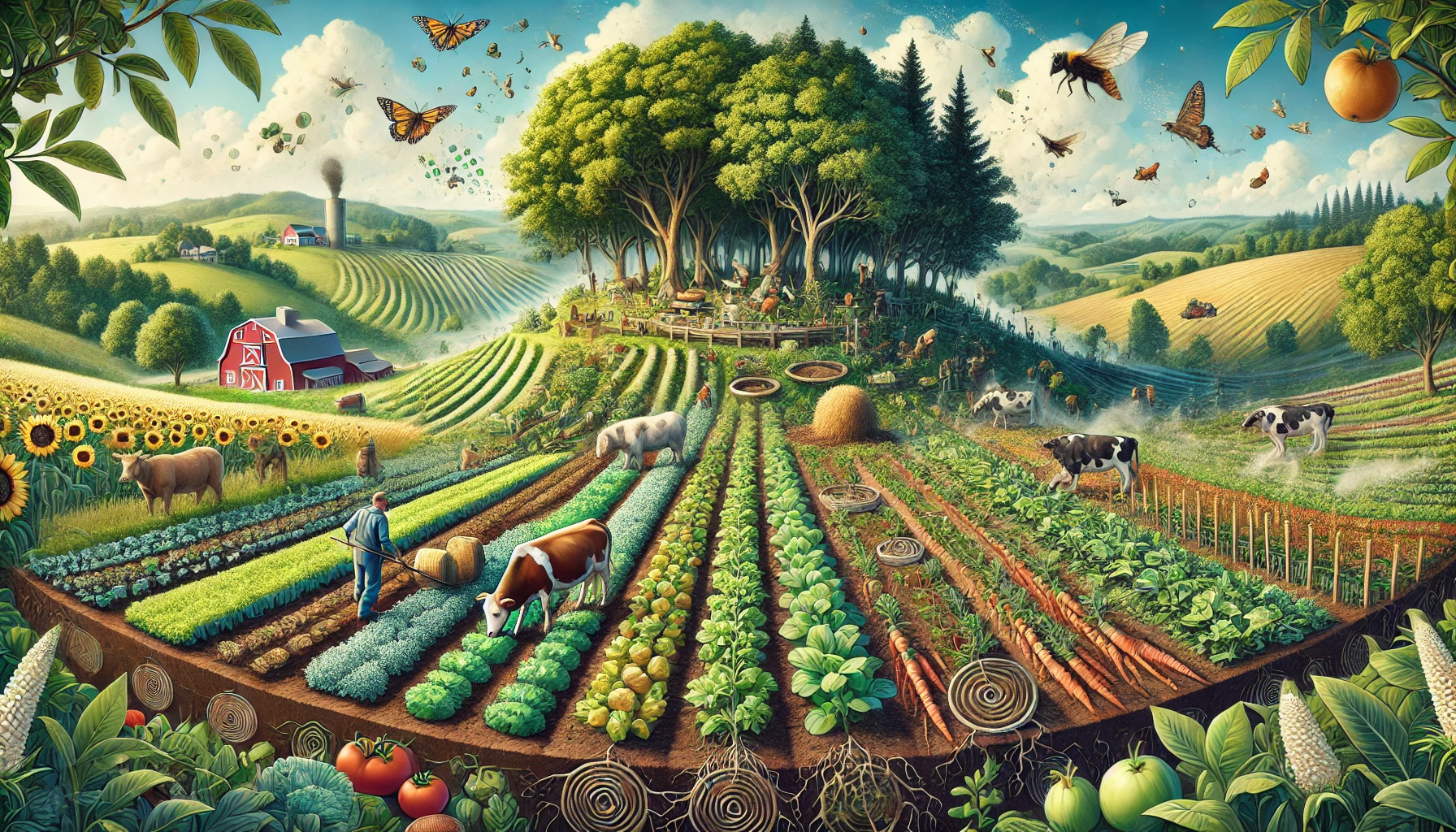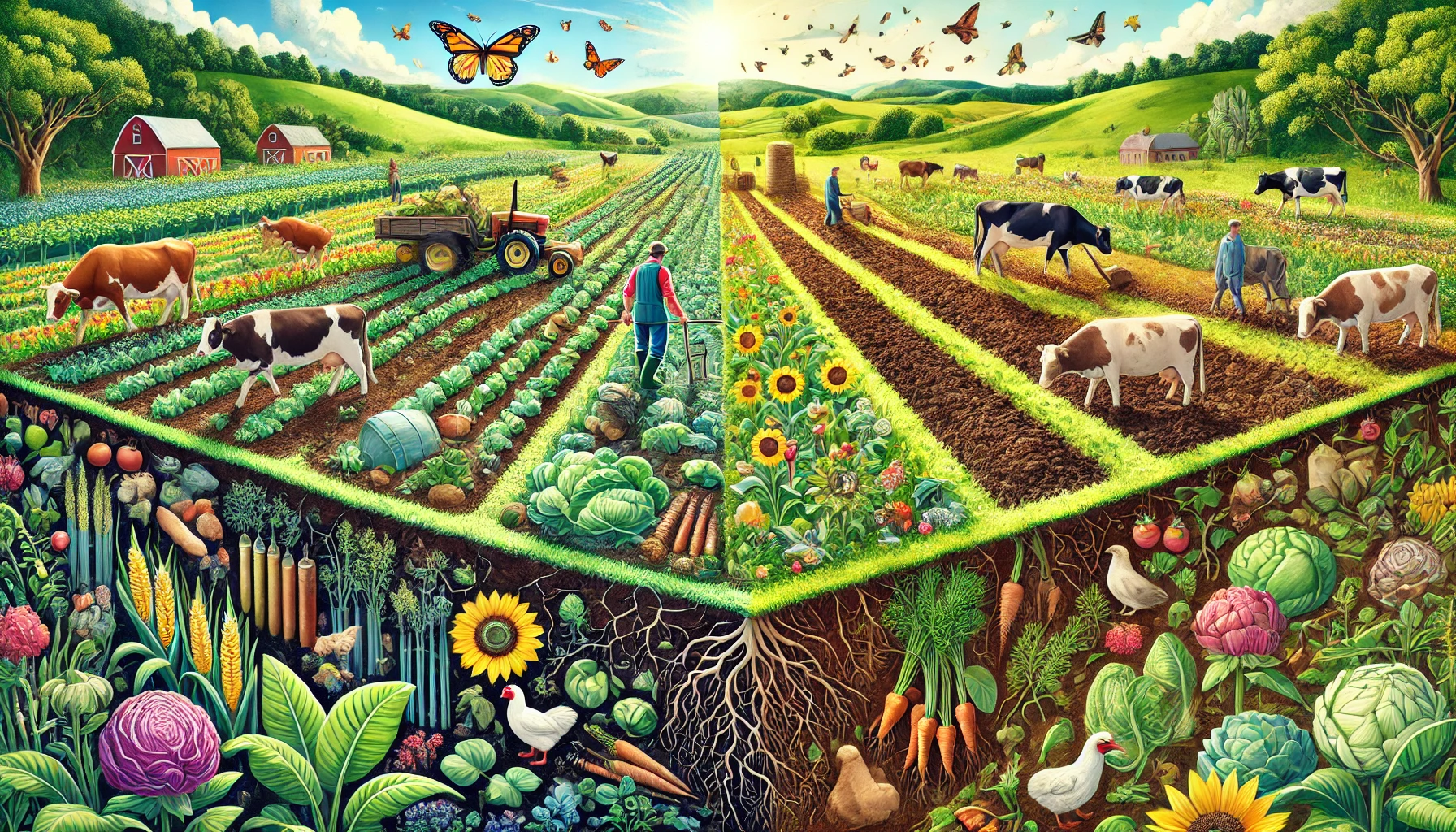
What is Regenerative Agriculture?
Regenerative agriculture is an ecological approach to farming that focuses on restoring and improving soil health, biodiversity, and overall ecosystem resilience. Unlike conventional farming methods, which often deplete soil nutrients and degrade land, regenerative agriculture works with natural ecosystems to enhance soil organic matter, improve soil fertility, and create sustainable food production systems.
The Core Goals of Regenerative Agriculture
-
Regenerate soil health by increasing soil organic matter and soil carbon stocks.
-
Reduce soil erosion and land degradation through conservation techniques.
-
Promote biodiversity and plant diversity to enhance natural ecosystems.
-
Reduce greenhouse gas emissions and sequester carbon dioxide in soil.
-
Minimize reliance on chemical inputs, such as synthetic fertilizers and pesticides.
-
Enhance climate resilience and support farmers and ranchers in adapting to climate change.
According to a study published in Nature Sustainability, regenerative agricultural practices can sequester up to 1.2 gigatons of carbon annually, making it a crucial tool in mitigating climate change.
Principles of Regenerative Agriculture
1. Nurture Relationships Within and Across Ecosystems
Regenerative agriculture emphasizes the interconnectedness of people, land, water, livestock, and microbial life. It aims to build ecosystem health by fostering natural relationships that enhance soil health and productivity.
Key Practices:
-
Encourage beneficial insects and wildlife to disrupt pest cycles and minimize the need for chemical pesticides.
-
Use diverse plant species and nitrogen-fixing crops to naturally enrich the soil.
-
Promote agroforestry systems that integrate trees with food crops and livestock.
2. Reduce Reliance on Synthetic Inputs
Modern industrial farming heavily depends on synthetic fertilizers, pesticides, and herbicides, which degrade soil and harm biodiversity. Regenerative agriculture promotes natural solutions for improving soil fertility and plant health.
Alternative Practices:
-
Crop rotation and cover cropping to maintain soil nutrients and suppress weeds.
-
Using animal manure and compost to improve soil fertility.
-
Adopting conservation tillage to minimize soil disturbance and prevent erosion.
“Healthy soil leads to healthier crops, which leads to a healthier population.” – Dr. Rattan Lal, soil scientist and World Food Prize Laureate
Benefits of Regenerative Agriculture

1. Environmental Benefits
Regenerative agricultural practices enhance biodiversity, improve soil structure, and mitigate climate change by sequestering carbon in soil.
|
Environmental Impact |
Regenerative Practices |
|---|---|
|
Increases soil organic matter |
Composting, cover cropping |
|
Reduces greenhouse gas emissions |
No-till farming, rotational grazing |
|
Enhances water retention |
Agroforestry, soil mulching |
|
Restores degraded lands |
Managed grazing, polyculture farming |
2. Economic Benefits
Regenerative farming can lead to higher crop yields, lower input costs, and increased farm profitability.
Economic Advantages:
-
Lower reliance on synthetic fertilizers and pesticides, reducing costs.
-
Higher resilience to climate change and extreme weather.
-
Improved market value for sustainably grown, nutrient-dense food.
Case Study: Gabe Brown, a regenerative farmer in North Dakota, increased his farm’s organic matter from 1.9% to over 6% in 20 years, improving water retention and boosting profits while reducing input costs.
Regenerative Agriculture Practices
1. Soil Conservation and Regeneration
Regenerative techniques enhance soil health and prevent erosion, ensuring long-term agricultural sustainability.
Best Practices:
-
Conservation tillage and no-till farming to reduce mechanical soil disturbance.
-
Cover crops and crop rotation to maintain soil structure and fertility.
-
Applying organic amendments like compost to enrich soil microbes.
2. Adaptive Grazing and Livestock Management
Integrating livestock rotations into regenerative farming boosts soil health and improves ecosystem balance.
Effective Strategies:
-
Rotational grazing to prevent overgrazing and enhance soil regeneration.
-
Managing livestock movements to mimic natural grazing patterns.
-
Using livestock to recycle nutrients and enhance soil microbes.
3. Carbon Sequestration and Climate Change Mitigation
Agriculture contributes to 24% of global greenhouse gas emissions, but regenerative agriculture helps reverse climate change by sequestering carbon in soils.
Climate-Smart Approaches:
-
Growing cover crops to absorb excess atmospheric carbon.
-
Agroforestry systems to integrate trees that store carbon.
-
Reducing synthetic fertilizers to lower nitrous oxide emissions.
“Regenerative agriculture is one of the most promising solutions to climate change.” – Paul Hawken, author of Drawdown
Implementing Regenerative Agriculture
Getting Started with Regenerative Agriculture

Transitioning to regenerative farming systems requires planning, education, and support.
Steps for Farmers:
-
Assess current farming systems and soil health.
-
Identify areas for improvement, such as reducing soil disturbance.
-
Develop a transition plan for regenerative agricultural practices.
-
Seek support from regenerative agriculture organizations.
Overcoming Challenges and Barriers
Despite its benefits, adopting regenerative practices comes with challenges, such as cost and knowledge gaps.
Strategies to Overcome Barriers:
-
Policy support and government incentives for regenerative farming.
-
Education and training programs for farmers and ranchers.
-
Access to funding and financial assistance for sustainable transitions.
Government initiatives such as the USDA’s Conservation Stewardship Program provide financial support for regenerative farmers.
Conclusion
Regenerative agriculture is an essential strategy for reversing land degradation, mitigating climate change, and improving soil health. By focusing on building soil health, enhancing biodiversity, and reducing chemical inputs, regenerative farming offers a sustainable path forward for agriculture.
Key Takeaways:
-
Regenerative agriculture restores soil, enhances biodiversity, and sequesters carbon.
-
Reducing synthetic fertilizers and promoting crop diversity improve ecosystem health.
-
Regenerative techniques support farmers economically and increase climate resilience.
-
Governments and organizations must support regenerative agriculture for large-scale adoption.
To learn more about regenerative farming, visit Rodale Institute and explore their research on soil health and organic agriculture.
By embracing regenerative agriculture, we can transform the food system, improve soil fertility, and build a resilient agricultural sector for future generations.
